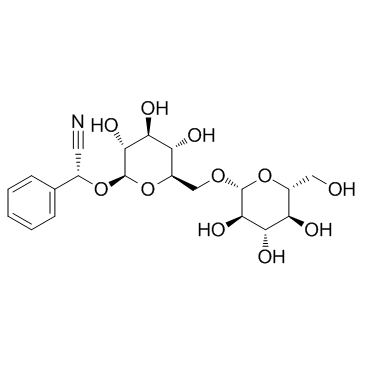| 结构式 | 名称/CAS号 | 全部文献 |
|---|---|---|
 |
菜豆苷
CAS:554-35-8 |
|
 |
扁桃苷; 苦杏仁甙
CAS:29883-15-6 |
| 结构式 | 名称/CAS号 | 全部文献 |
|---|---|---|
 |
菜豆苷
CAS:554-35-8 |
|
 |
扁桃苷; 苦杏仁甙
CAS:29883-15-6 |